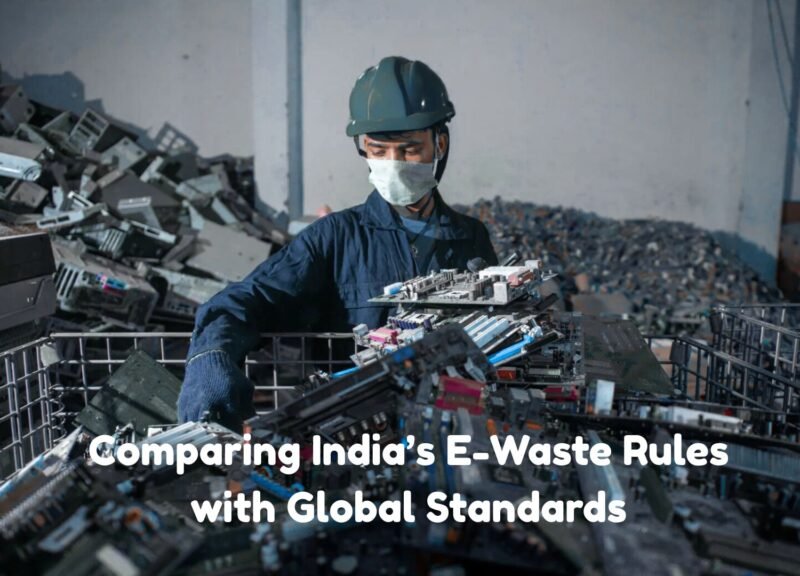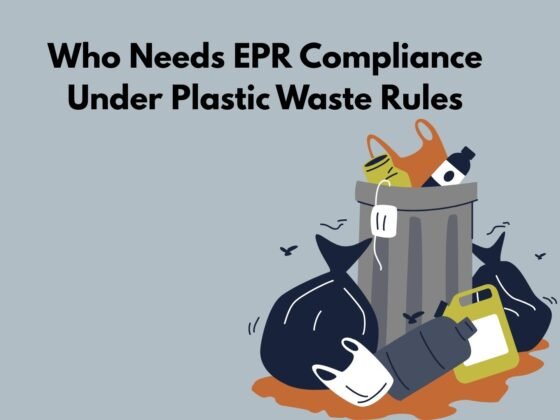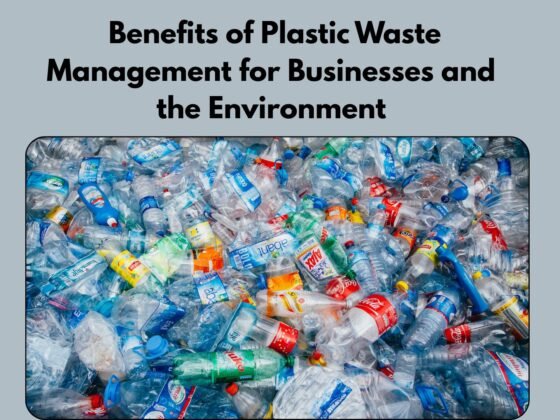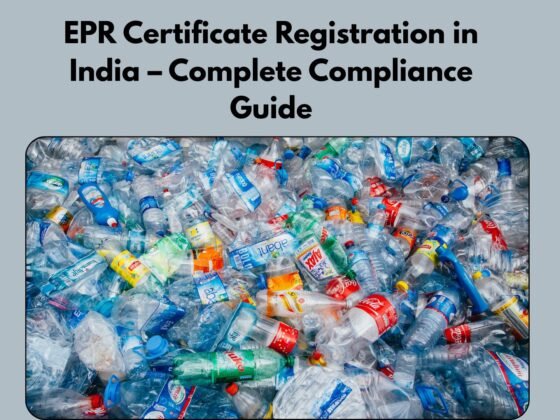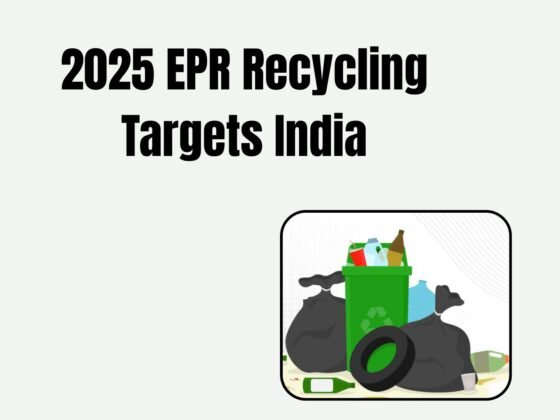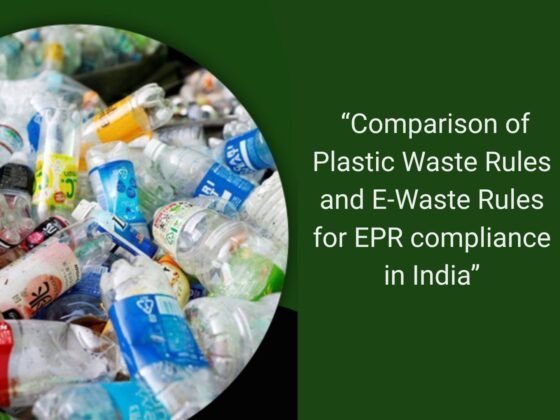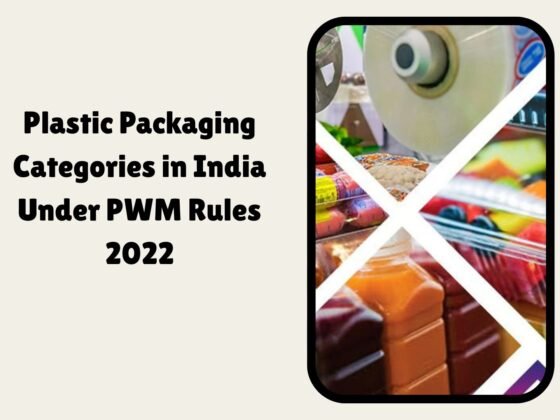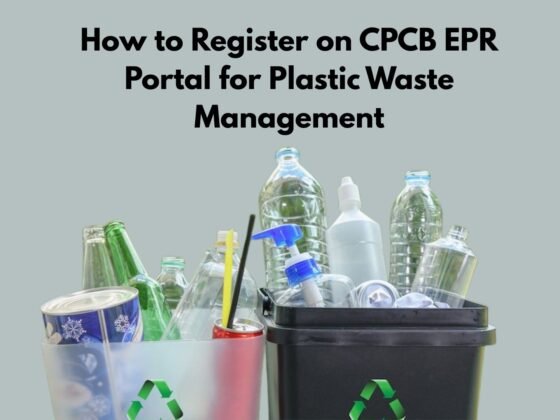Comparing India’s E-Waste Rules with Global Standards: India’s e-waste laws are ambitious, but global leaders set the bar higher in implementation, innovation, and citizen participation.
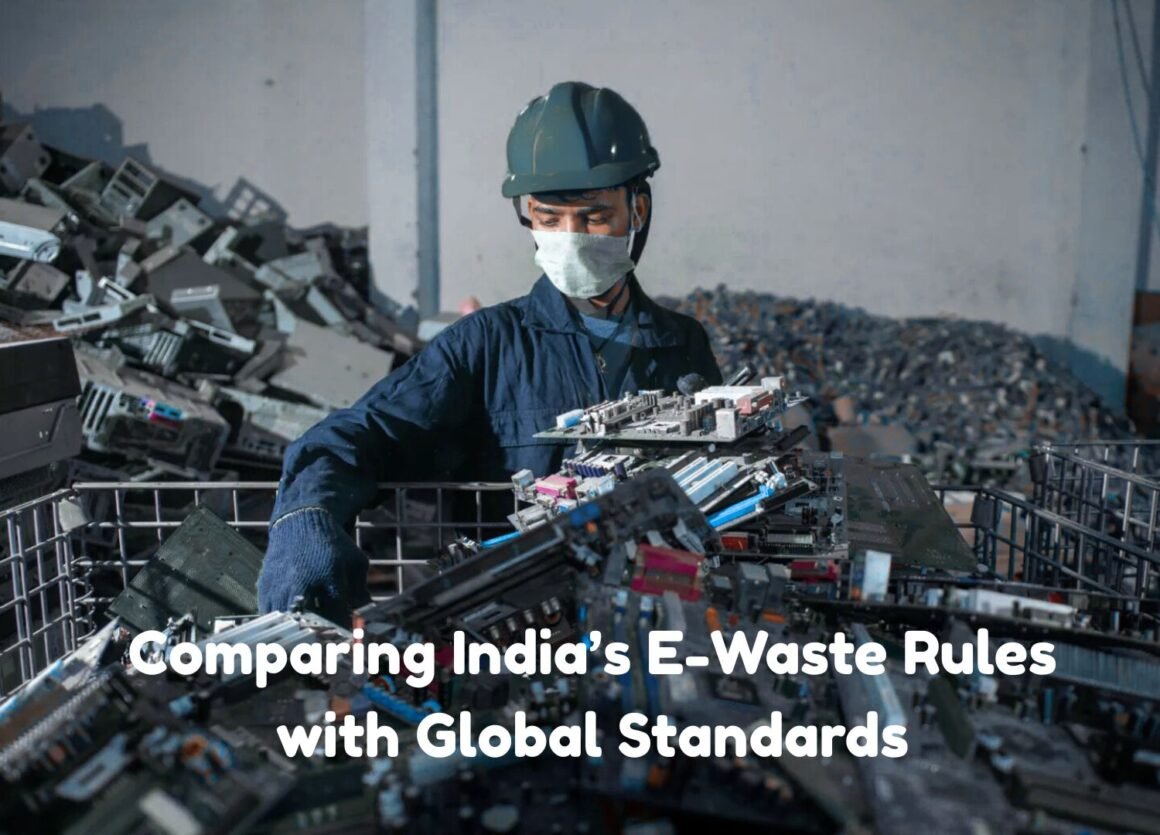
E-waste, or electronic waste, is one of the fastest-growing waste streams worldwide. According to the UN, over 62 million tonnes of e-waste were generated globally in 2022, and this number could double by 2050. India, the world’s third-largest e-waste generator, has introduced several regulations to manage this challenge—most recently, the E-Waste (Management) Rules, 2022. But how do India’s laws measure up against global benchmarks like the EU’s WEEE Directive, Japan’s recycling systems, or South Korea’s circular economy model?
This article offers an in-depth comparison of India’s evolving e-waste framework with international standards, highlighting what India gets right and where it still lags behind.
Legal Framework: Ambition vs Implementation
India’s 2022 rules modernized e-waste governance by introducing Extended Producer Responsibility (EPR) credits and a digital tracking system under the Central Pollution Control Board (CPCB). However, unlike the EU’s WEEE Directive, India’s laws focus more on collection targets and less on eco-design—a critical element in reducing waste at the source.
Globally, countries like Japan, South Korea, and the EU mandate that producers design electronics for easier disassembly, repair, and recycling. India’s regulations, while comprehensive, stop short of enforcing design-level sustainability.
Comparing India’s E-Waste Rules with Global Standards: Product Coverage and Scope
India’s 2022 Rules expanded the e-waste category list to include IT equipment, consumer appliances, lighting, and medical devices, aligning closer to global norms. Yet, while the EU provides explicit product codes and clear end-of-life responsibilities, India’s classification remains broad and sometimes ambiguous.
In contrast, South Korea and Japan adopt sector-specific approaches—categorizing products based on recyclability, material composition, and lifespan. This helps achieve precision in waste management and compliance monitoring.
Extended Producer Responsibility (EPR)
India’s EPR mechanism allows producers to earn recycling credits by partnering with registered recyclers. This mirrors global EPR systems but suffers from verification challenges—fake credits, underreporting, and poor audits.
In contrast, the EU’s EPR model mandates third-party verification, independent audits, and penalties for false reporting. Similarly, Japan’s EPR is tied directly to producer funding, ensuring full lifecycle accountability.
Enforcement and Accountability
India’s 2022 Rules introduced Environmental Compensation for non-compliance. However, enforcement remains weak due to inadequate manpower in SPCBs, fragmented coordination, and slow legal recourse.
Globally, violations lead to hefty fines, license revocation, or public blacklisting. For example, under the EU model, repeat offenders face suspension from the market. Japan imposes recycling surcharges, while Canada mandates proof of compliance for continued operation.
India’s laws have teeth, but the bite is still missing.
Infrastructure and Recycling Capacity
India’s formal e-waste recycling capacity (~1.3 million tonnes/year) is insufficient to handle its total waste generation (>1.6 million tonnes). In contrast, the EU and Japan have robust recycling hubs, municipal collection partnerships, and efficient reverse logistics systems.
Japan’s model stands out: consumers pay a small recycling fee when discarding electronic products, funding advanced recycling plants that achieve over 90% recovery efficiency. India’s collection infrastructure remains fragmented and heavily reliant on informal networks.
The Informal Sector: India’s Biggest Gap
Over 90% of India’s e-waste is handled by the informal sector, using unsafe, low-cost methods like acid leaching and open burning. While informal recyclers recover valuable metals efficiently, their practices cause environmental and health hazards.
Global models have formalized recycling entirely—through regulation, automation, and inclusion programs. India’s challenge (and opportunity) lies in integrating informal workers via training, safety gear, and licensing support.
Public Awareness and Consumer Participation
The EU and Japan invest heavily in public education campaigns and convenient collection systems. Sweden even rewards consumers with deposit refunds for responsible disposal. In India, however, awareness remains limited—only 37% of urban consumers know where to dispose of e-waste safely.
To bridge this gap, India needs a continuous national campaign linking sustainability to everyday behavior—encouraging citizens to recycle electronics responsibly.
Comparative Overview: India vs Global Standards
| Criteria | India | European Union | Japan | South Korea | Canada |
|---|---|---|---|---|---|
| EPR System | Digital Credits | Producer-Funded | Take-Back Mandate | Deposit Return | Provincial Models |
| Eco-Design | Limited | Mandatory | Strong | Moderate | Moderate |
| Recycling Efficiency | 30% | 85% | 90% | 80% | 70% |
| Informal Sector | 90% Unregulated | None | None | None | None |
| Public Awareness | Low | High | High | Medium | Medium |
Policy Lessons and Recommendations
- Strengthen Enforcement: Empower CPCB and SPCBs with funding, staff, and digital monitoring tools.
- Incentivize Compliance: Offer tax benefits and green credits to producers who exceed EPR targets.
- Mandate Eco-Design: Require producers to manufacture easily repairable and recyclable electronics.
- Formalize Informal Workers: Provide training and licensing to kabadiwalas.
- Invest in Awareness: Launch a national e-waste campaign emphasizing consumer responsibility.
- Adopt Global Tech: Integrate AI, IoT, and blockchain to ensure traceability.
Conclusion: Comparing India’s E-Waste Rules with Global Standards
India’s e-waste laws are progressive on paper, aligning closely with global frameworks. However, the difference lies in enforcement, technology, and citizen engagement. The EU and Japan prove that when strong regulation meets social responsibility, waste becomes a resource—not a liability.
For India, the road ahead involves turning policy ambition into practical execution. With stronger enforcement, smarter technology, and public participation, India can move from compliance to leadership in global e-waste management.
FOR MORE BLOGS – beyondthepunchlines.com

 Add to favorites
Add to favorites
